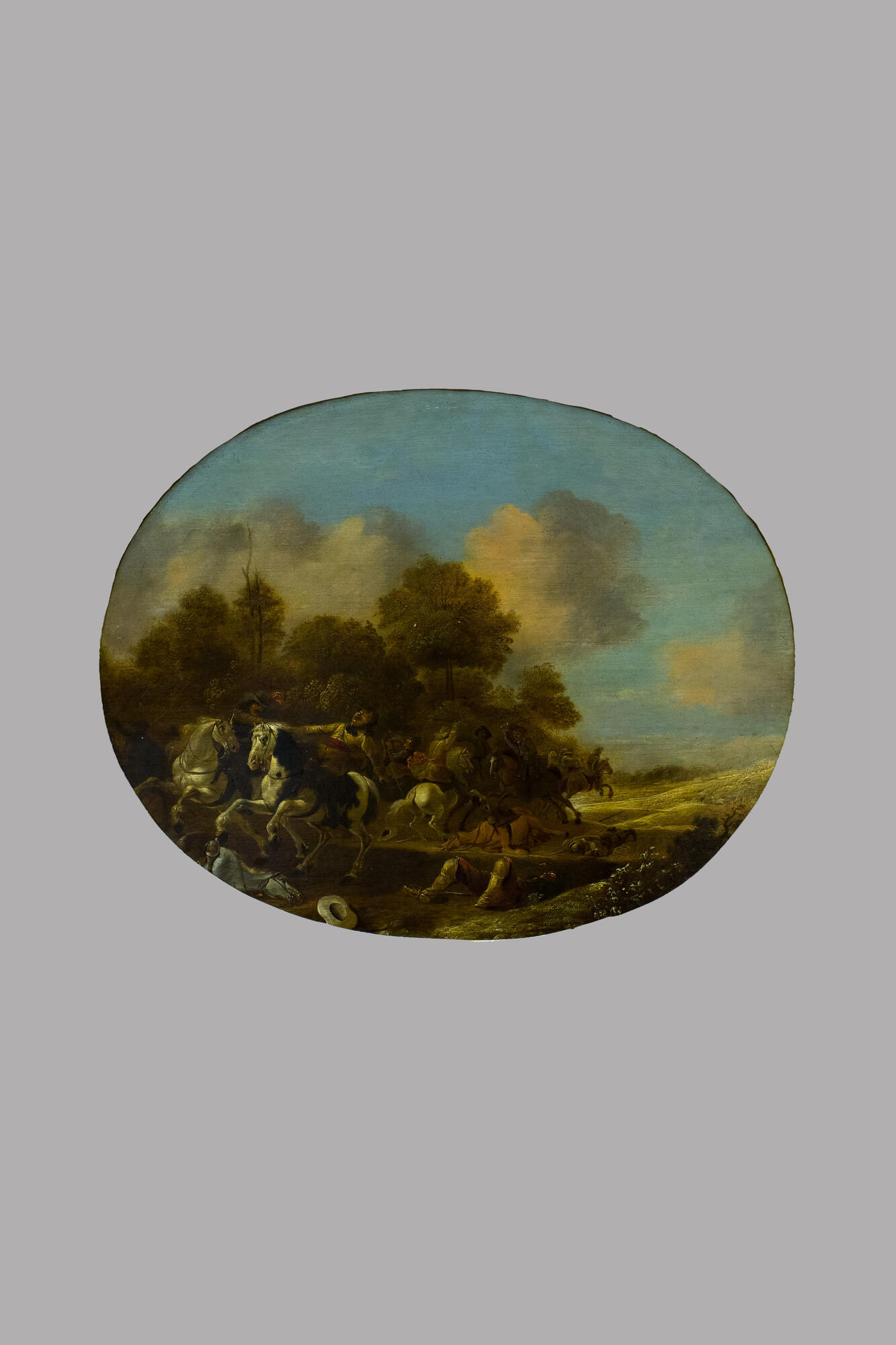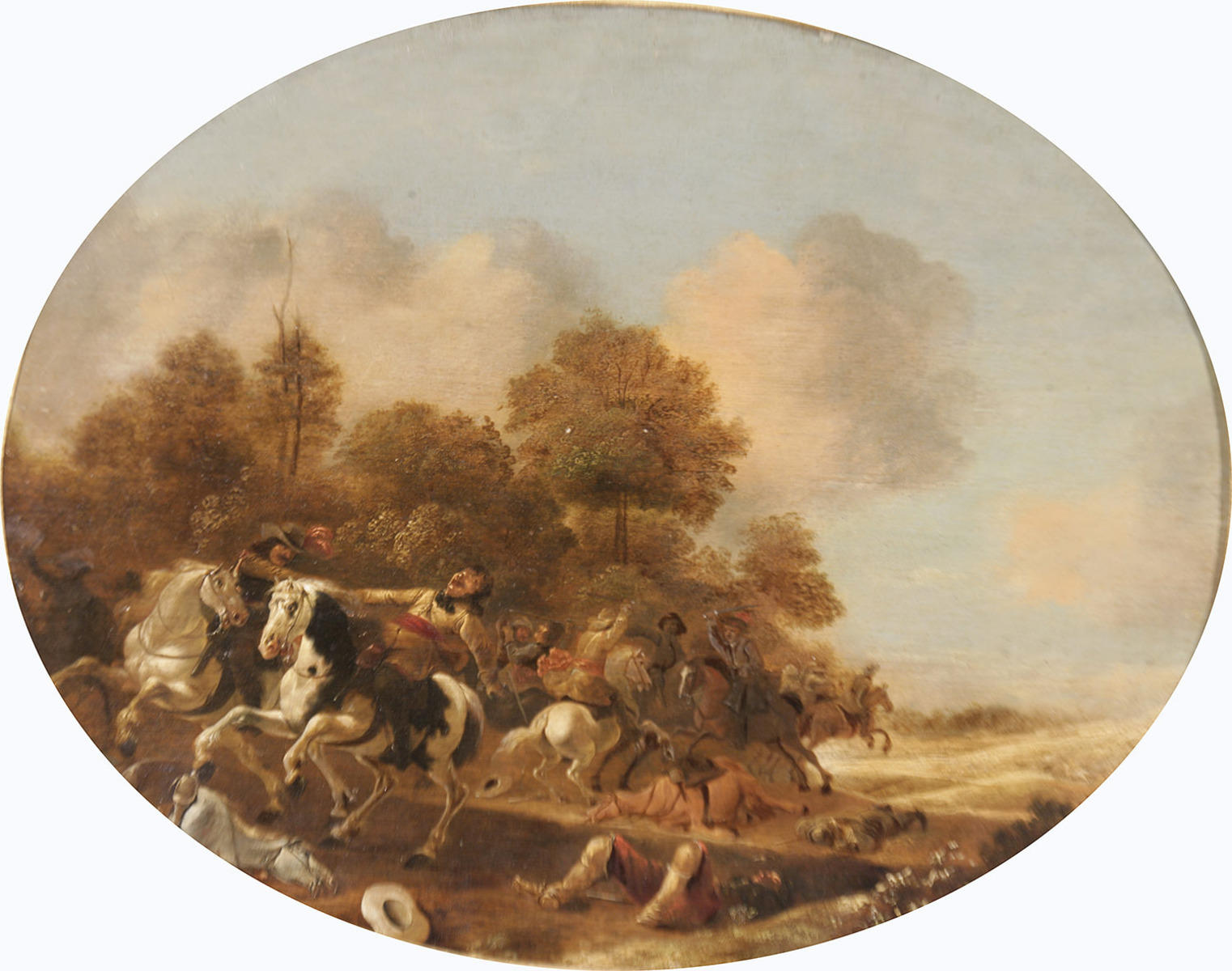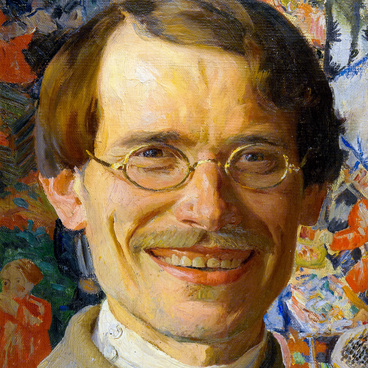The painting “Battle Scene” by Jan Jacobsz van der Stoffe is an example of military art. The battle genre in Dutch art began to form in the 1620s due to the national war for independence waged by the Dutch people against the Spanish monarchy. Only in 1648, after the signing of the Peace of Westphalia, Spain recognized Holland as an independent state. The painting was created when the Dutch people were fighting for independence, which is confirmed by the artist’s signature and the date that can be read on the canvas at the bottom right: “Stoffe 1646”.
In his work, the artist Jan Jacobsz van der Stoffe captured a typical episode of military operations of his time. In this canvas, one can note the national peculiarities of painting of that period: a small size, a succinct depiction of the battle scene, and proper attention given to the landscape. It is an oil painting on wood, and the composition is inscribed in an oval: in the left part the artist shows a skirmish of cavalry, the right part is dedicated to the landscape. The color palette is based on restrained brownish-golden shades.
This canvas was once housed in the collection of an outstanding Russian scientist and geographer, researcher of the Tian Shan range — Pyotr Petrovich Semyonov-Tyan-Shansky. He was one of the most prominent Russian collectors of Dutch and Flemish paintings and graphic works of the 17th century. His collection included about 700 works by 340 artists, as well as 3,500 engravings. Pyotr Semyonov-Tyan-Shansky scientifically examined his collection, published a catalog and wrote a paper on the history of Flemish and Dutch painting of the 17th century.
Semyonov-Tyan-Shansky dedicated over 50 years to collecting. The idea of it was born in his youth after he had visited museums in Germany, France, Italy, and the Czech Republic. The antiquarian Mikhail Savostin wrote, “His collection of Dutch art was so complete… that some artists who were unknown even in Holland could be found in his collection.”
In 1874, Pyotr Petrovich was elected an honorary member of the Academy of Arts.
In his work, the artist Jan Jacobsz van der Stoffe captured a typical episode of military operations of his time. In this canvas, one can note the national peculiarities of painting of that period: a small size, a succinct depiction of the battle scene, and proper attention given to the landscape. It is an oil painting on wood, and the composition is inscribed in an oval: in the left part the artist shows a skirmish of cavalry, the right part is dedicated to the landscape. The color palette is based on restrained brownish-golden shades.
This canvas was once housed in the collection of an outstanding Russian scientist and geographer, researcher of the Tian Shan range — Pyotr Petrovich Semyonov-Tyan-Shansky. He was one of the most prominent Russian collectors of Dutch and Flemish paintings and graphic works of the 17th century. His collection included about 700 works by 340 artists, as well as 3,500 engravings. Pyotr Semyonov-Tyan-Shansky scientifically examined his collection, published a catalog and wrote a paper on the history of Flemish and Dutch painting of the 17th century.
Semyonov-Tyan-Shansky dedicated over 50 years to collecting. The idea of it was born in his youth after he had visited museums in Germany, France, Italy, and the Czech Republic. The antiquarian Mikhail Savostin wrote, “His collection of Dutch art was so complete… that some artists who were unknown even in Holland could be found in his collection.”
In 1874, Pyotr Petrovich was elected an honorary member of the Academy of Arts.



